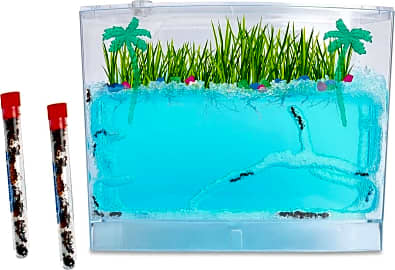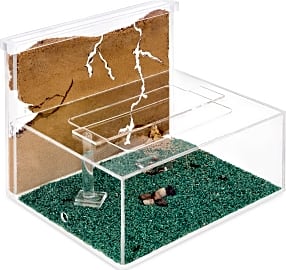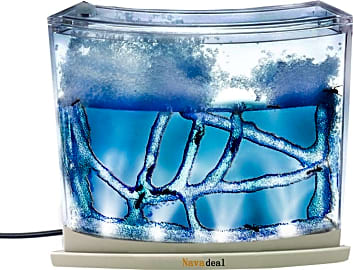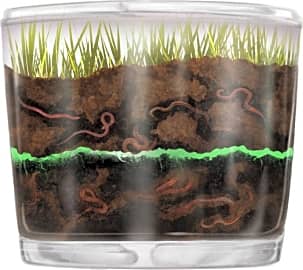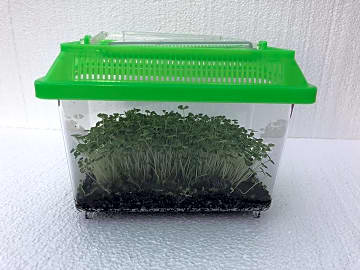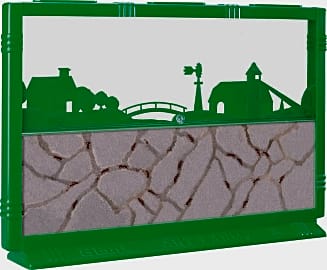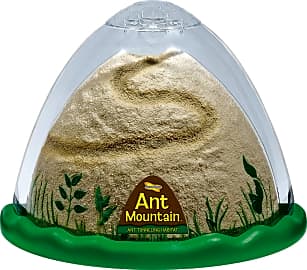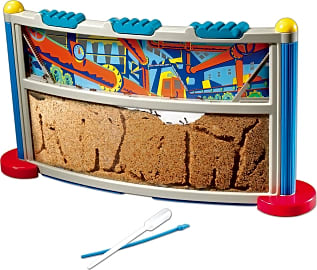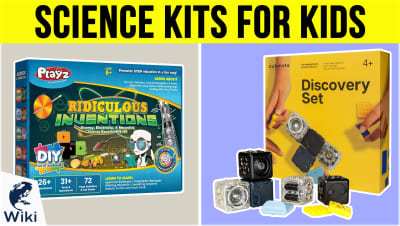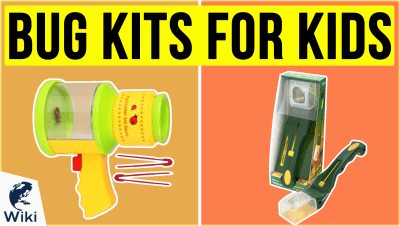The 10 Best Ant Farms

This wiki has been updated 37 times since it was first published in September of 2015. Enjoyed by adults and children alike for decades as a fun, educational project, ant farms offer a view into a world that's typically hidden in the earth. Our selection has something suitable for the home or classroom, in both traditional and modern styles. For safety and to prevent infestation, follow all directions carefully and supervise kids when they’re around these habitats. When users buy our independently chosen editorial picks, we may earn commissions to help fund the Wiki.
Editor's Notes
July 13, 2020:
If your child enjoys science kits as well as studying living creatures, it's hard to go wrong with an ant farm. In today’s update, we added in the Nature Gift Store Ecosystem, which provides a space for both insects and plants to live, and it comes with a bag of grass seed and two tubes that contain 25 ants in total. Inside it is a nutrient-rich blue gel, so you won’t need to worry about adding food and water. For decoration, it comes with blue, green, and pink rocks, as well as two plastic palm trees. Additional accessories that are included are a magnifying glass and a tunnel starter tool. We also added the Insect Lore Mountain, which is shaped like a real-life ant hill, and is open on both sides to give you a nice, clear view. While it doesn’t arrive with live ants, it come with a certificate to mail in for a colony of them. There is a handy downloadable guide listing instructions and activities. The top lid locks securely to prevent your six-legged pets from escaping, although note that you’ll have to be patient when filling it, since the top opening is quite small. The front sticker can be difficult to remove, according to some reports, so be sure to remove it carefully so as not to damage the plastic or leave a mark on it.
We kept the Nature Gift Store Interactive in its top spot, as it’s like a miniature carnival full of rides and activities that ants love, including ladders, platforms, see-saws and a merry-go-round. It’s linkable with other sets of its kind, which would allow your industrious insects to make their way from one home to another at will. It provides a tube of live critters, so you won't need to bother catching some bugs yourself, as well as some white sand. If you want to branch out from ants to other common backyard critters that are equally fun to watch, check out the Nature Gift Store Observation Kit and the Pocket Pets Roly Poly Terrarium, which can serve as homes for worms and pill bugs, respectively. For a classic set you may remember from your own childhood, look to the Uncle Milton Giant, which features a green silhouette of a farm scene. It sports a large two-sided viewing area and a wide stand for stability, and comes with a tunneling tool so you can help the ants get started with their work.
To prevent infestations and bites, keep your ant farm locked securely at all times. Supervise young children whenever they’re around it; be sure to follow the manufacturer’s stated age requirements, as many of these contain small parts and are not intended for use by kids younger than three years of age.
July 02, 2019:
Ant farms are a fun, affordable way for kids and adults alike to learn about ant colonies and just how these industrious insects behave. One useful thing to know up front is that once you’ve got one, your first batch of ants will typically last from one to six months, depending on their age when you acquire them and their living conditions. (Because these farms usually only house worker ants, they won’t reproduce.) Quality ant farms are relatively low maintenance and they lock securely, and really only require you to provide food and water for your insect pets. Our list provides several sturdy options, including a couple that are designed to house other types of common backyard critters.
Joining the selection is a choice that in many ways resembles a real-life playground. The Nature Gift Store Interactive features see-saws and a merry-go-round so your ants can take a ride, and they’ll also enjoy climbing the ladders and platforms. Unlike some selections, it does come with a tube of live ants, and you can also purchase a second kit and attach the two habitats via the included clear tube to watch your ants move from one to the other and back again.
The newly added Pocket Pets Roly Poly Terrarium is great for those who want to get an up-close-and-personal look at pill bugs, one of the most common invertebrates you’ll come across when exploring under rocks or logs. The clear container is also equipped with a clear top section, for easy viewing. You’ll receive one of a selection of brightly colored lids (blue, green, orange, or purple), along with chia seeds, substrate, and a mail-in voucher to receive 10 roly poly bugs. (Or, you can always just grab some from your own backyard.) This terrarium is painted, assembled, and shipped by an aspiring young entomologist in Columbus, Ohio, with the help of his parents.
Another new addition is the Evviva Sciences Cosmos, a modern option that comes with a nutrient-rich blue gel as well as a blue LED light. This model comes with an adapter that plugs into a standard AC outlet. While it offers a sturdy base and the top fits on securely, note that it does not have a locking mechanism, so you don’t want to place it atop a dresser or any other surface where it could become jostled.
Leaving our list today is the special edition, Star Wars-themed Jakku Science Kit, due to issues with availability.
Whichever you choose to go with, be sure to pay attention to the age guidelines, which are listed for each of our selections and range from four years of age and up. These are not meant for toddlers and younger children, and many come with accompanying warnings due to their having small parts. Since ants and other insects can bite if touched or provoked, and to help keep your home from becoming infested, be sure to supervise children at all times when they’re around these products.
Special Honors
Ant’s Kingdom Master Major Set Designed to house harvester ants, this breeding habitat is molded by hand out of plaster and features shallow chambers that are easy to observe. The outer tunnels are deeper and ideal for the workers to stack their food supply and seeds, and all corridors are connected. It features eight chambers in all and can accommodate up to 200 ants at once. It’s made in the Netherlands and can be shipped almost anywhere around the globe, including North America. antskingdom.com
Tar Heel Ants Atrium This structure features open chambers and can hold an estimated 1,000 to 2,000 medium-sized ants or up to 1,000 ones of larger species like Camponotus or Formica. It incorporates a two-level nest block and a foraging area that’s attached via a magnetic connection. The two components are held together by a stable painted base. Ports are provided on both the nest and the foraging area for further expansion, as desired. Add-on options include museum glass covering all three sides, an Alate Window top panel, and a Mini Hearth formicarium to start off your queen or colony in. tarheelants.com
Nature Up Close And Personal: The Ant Farm
They require little to no maintenance, which is another bonus in the eyes of many.
An ant farm is a type of vivarium, or an enclosed space in which to keep animals for the purpose of study and observation, quarantine, or for amusement and decoration. Formally known as a formicarium, ant farms have been around for well over one hundred years now.
The first recognized ant farms were created by a French scientist by the name of Charles Jane. He showed off his narrow, two dimensional ant habitats in the year 1900, though no commercially available ant farm would be created another three decades. (Janet had no interest in the market value of his formicarium, being an entomologist, not a salesman.)
Ant farms marketed for amusement as opposed to research tools first went on sale in 1930. A man named Frank Austin patented his design for whimsically decorated ant farms that created rich settings in which the ants lived. However, it would not be until the 1950s that ant farms truly became popular, commonly seen items. The company that would soon be called Uncle Milton Industries began selling ant farms (after patenting the very term) in the latter half of the 1950s, and would go on to sell more than 20 million ant farms (and counting) over the subsequent decades.
If you're interested in owning an ant farm or giving one as a gift, there are two basic types of formicarium from which to choose. The first is the time-honored design that uses sand sandwiched between two sheets of clear plastic (glass was used in earlier years, but lucite or acrylic is now much more common), allowing for a visually similar recreation of the tunnels ants create in their subterranean colonies.
This classic take on the ant farm will always be in style and is a great choice for the youngster and adult alike who has a genuine interest in entomology (or just in ants specifically). Note that this type of ant farm does require something of a hands-on approach, usually requiring use of a tunnel starter (sometimes called a canal starting tool) to commence a tunnel the ants will later continue, and requiring the occasional addition of water and food to keep the ants alive and healthy.
The other common type of ant farm combines their habitat and food into one material, an ant gel. This gel, perfected largely thanks to experiments sponsored by NASA and conducted in space, is commonly made with extracts from seaweed, amino acids, and sugars, and is a rich source of nutrition and hydration. It is also perfect for boring through, easily holding its shape and forming the tunnels ant colonies require.
Ant farms using ant gel have a decidedly less traditional appearance than sand ant farms, and for some people this will be a selling point. These formicariums make great decorations for a shelf or desk, often featuring built in LED lighting that can even see them acting as night lights. They require little to no maintenance, which is another bonus in the eyes of many.
Ways To Help Your Ant Farm Thrive
If you have an ant farm filled with ant gel, there are few steps you will need to take to keep its "residents" alive and well. One thing you can do (if possible, given the unit's design) is to remove any ants who happen to perish, preventing their bodies from rotting and clearing space for the living ants. You may also need to periodically add more ant gel if you have a formicarium whose ants live for a good long time.
You may also need to periodically add more ant gel if you have a formicarium whose ants live for a good long time.
For sand filled ant farms, the care and maintenance is a bit more involved. You should plan to feed the ants every third day (adding more if the food disappears fast, less if it lingers) and clearing out older foods that have been neglected before they rot. While ants will eat almost any foodstuff, some of the best choices include bits of dried oats, bits of green vegetables, fruit shavings, and bread crumbs. Also plan to add drops of water every few days as well. The soil should never become saturated, but it should remain somewhat moist. This helps with ant hydration and maintains the sand as a viable tunneling and building medium.
Try to keep the ambient temperature around your ant farm between 60 and 70 degrees Fahrenheit when possible. A lower temperature can make these cold blooded creatures sluggish, while warmer temperatures can shorten their lifespans. And never leave an ant farm where it will sit in direct sunlight. This can heat up the ant farm, quickly killing off ants who have no way to burrow under ground or seek shade to escape the punishing rays of sunshine.
A Bit Of Info On Harvester Ants
Ants may be small in stature but they are a major source of fascination for many people. And the more you learn about these diminutive denizens of our country, the more you will come to appreciate them. Many people consider the harvester ant to be the ideal insect for an ant farm. The red harvester ant in particular, known as the Pogonomyrmex barbatus in the scientific community, is one of the more common ants kept in formicariums.
And the more you learn about these diminutive denizens of our country, the more you will come to appreciate them.
These ants are native to sandy areas of the southwestern United States, thus readily adjust to the sands of an ant farm. Measuring between five and seven millimeters in size, red harvester ants are relatively large in the realm of the ant world. These insects get their common name from their ruddy color and from their behavior, which involves the gathering of seeds as their primary food source in nature. They will of course readily devour many other foods, easily processing most edible materials with their proportionally large and powerful mandibles.
In the wild, red harvester ants typically range up to fifty yards from their colonies in a given day, collecting food from various sources and managing to spread seeds and propagate various species of plant in the process. They are a highly cooperative species of insect, working in tandem for the greater good of the colony. As for lifespan, red harvester ant queens often live for only one year, but have been known to remain alive for as long as two decades or even longer.


